The In Win 303 Case Review: Minimalist ATX with Tempered Glass for $93
by E. Fylladitakis on October 12, 2016 8:00 AM EST- Posted in
- Cases/Cooling/PSUs
- In-Win
- ATX
- Case
- In Win 303
- InWin 303
The Exterior of the In Win 303
The In Win 303 visually is very simple, perhaps even excessively minimalistic. All of the case’s panels are metal and only the side panels are removable. The front and top panel of the case are entirely flat, with just the I/O ports, buttons and an illuminated panel with the company’s logo at the front of the case. We received the white version of the 303 that has white exterior metal panels, with the exception of the smoked tempered glass door (real glass, not acrylic) left side panel. The paint is very well applied. Note however that the white paint of the 303 is not perfect white or snow white, but leans slightly towards the floral white hue.
11.2 oz soda can added as a size reference.
Measuring 50 cm tall, 21.5 cm wide and 48 cm deep (19.7 × 8.5 × 18.9 in), the In Win 303 is not small for an ATX tower case. It has a volume of 51.6 liters, almost identical to that of an advanced ATX case but with optical drive bays, the Corsair 450D (also 51.6 liters). It is larger than the Zalman Z9 Neo (48.4 liters) and NZXT S340 (38.4 liters), which are relatively low-cost ATX tower cases, but it also is very heavy, tipping the scales at 11.2 kg, making it at least 50% heavier than typical ATX cases. A portion of that will be the glass panel.
The front I/O ports and buttons can be found across the right side of the front panel. A large square Power On button can be seen at the top corner of the front panel, followed by a small square reset button. An illuminated panel with the company logo separates the I/O ports from the two buttons. Two USB 2.0 ports, 3.5 mm audio jacks and two USB 3.0 ports can be seen in line under the illuminated panel. These six ports also have illuminated surrounds that will stay constantly lit as long as the system is powered on.
A look at the rear of the In Win 303 case hints that the interior design will be more or less atypical. The system area is at the bottom of the case and the PSU compartment is above it, resembling the classic ATX configuration. However, the PSU is mounted vertically, drawing air in from the right side panel of the case. One slot for a 120 mm fan can also be seen.
The bottom of the case serves as its main air intake. The clearance between the case and the surface is barely adequate, with the 303 standing on two large but short rectangular feet. A large nylon filters covers the entire intake, which can be removed by pulling it from the side of the case. We found this to be an excellent design choice, as the filter can be easily accessed from the side of the case. Considering the length of these filters, removal from the rear of the case is typically problematic and inconvenient, making this design a bit nicer.


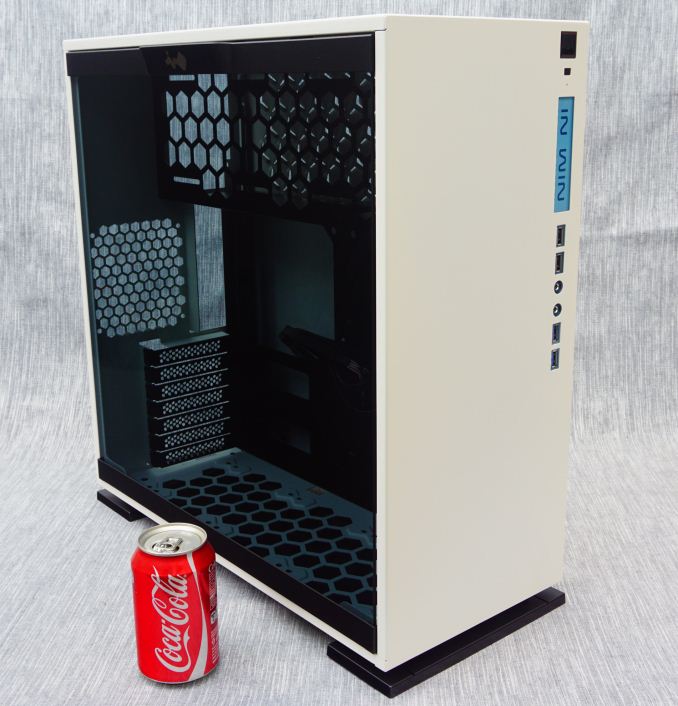
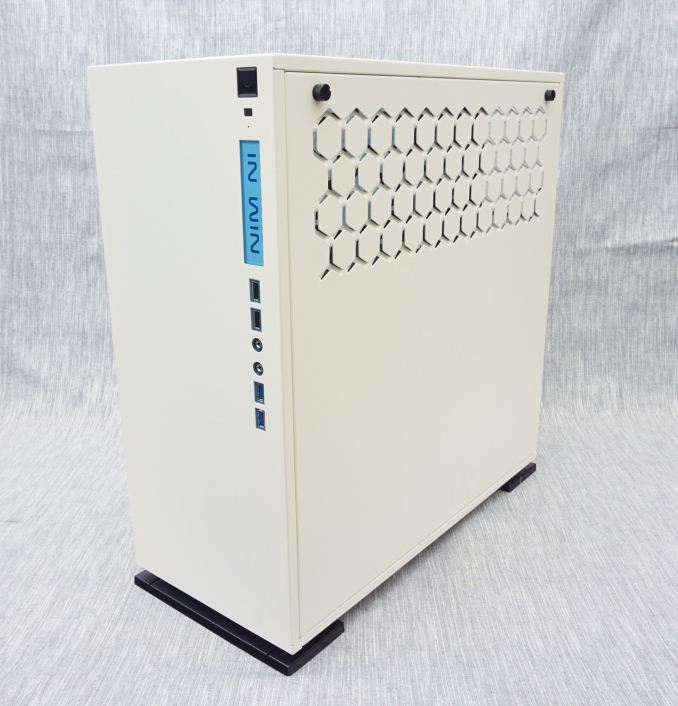
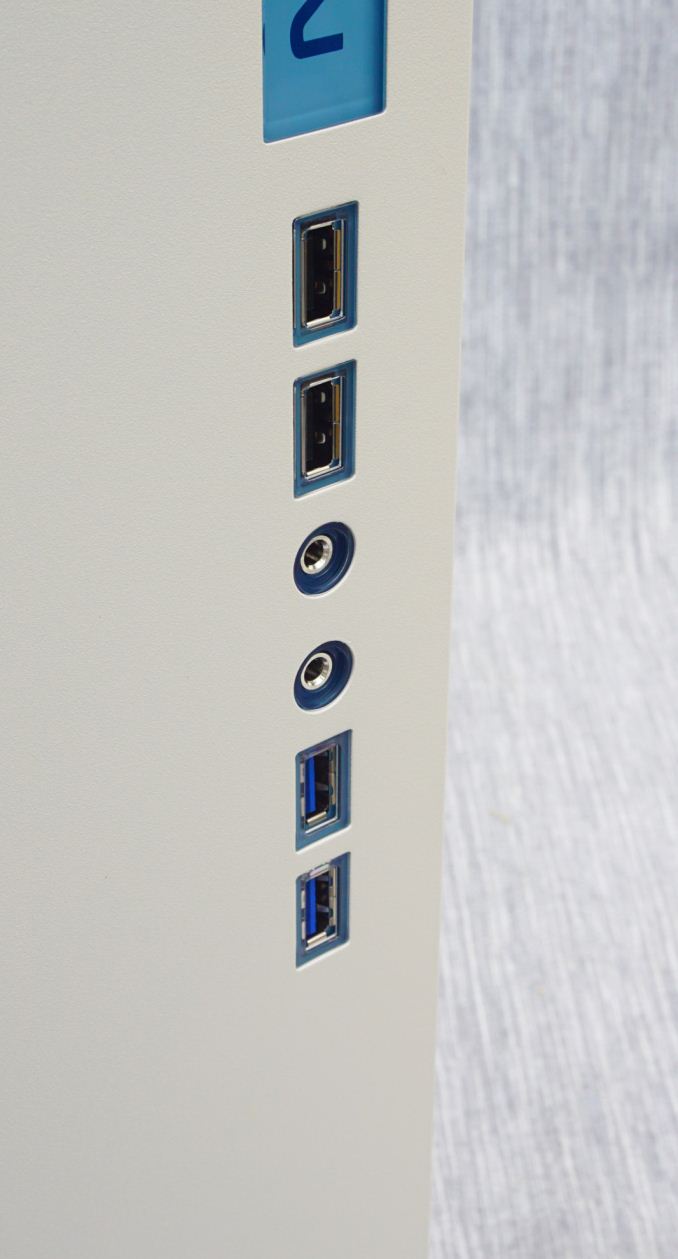

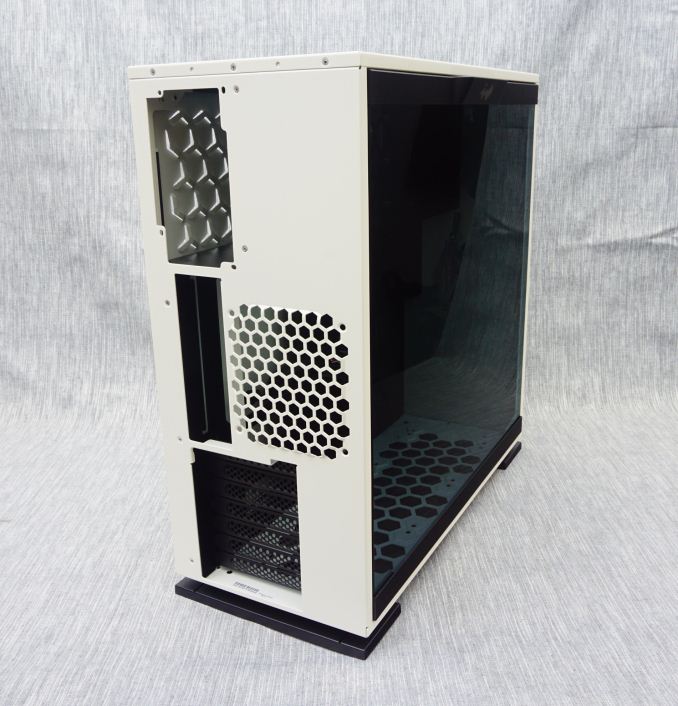
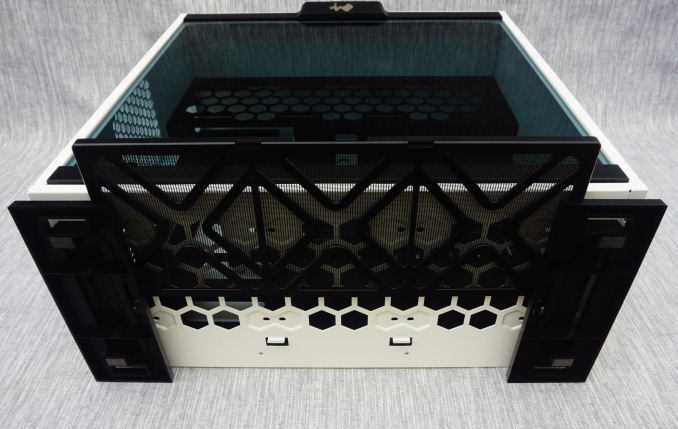








43 Comments
View All Comments
nagi603 - Thursday, October 13, 2016 - link
Well...not a fan of always-on LEDs. And the back design? Couldn't the back would have fitted a double 120mm rad / two 120mm fans if they added a few centimeters more to the width? That vented side won't allow for much airflow. (As it is reported by the graphs describing a poor thermal performance.)Plus, it almost looks beige.... D:
colonelclaw - Thursday, October 13, 2016 - link
I generally get at least 5 year's use out of a case, so if I was purchasing one right now I would have to insist on it having USB Type C. Other than that, it looks fine.3ogdy - Sunday, October 16, 2016 - link
Yeah, other than that, you'd be spending the next half a decade with a 3.6 decade old fridge in which components aren't even kept extremely cool (as in lower-than-ambient-temps cool)valinor89 - Friday, October 14, 2016 - link
Is it as beige as it looks on my work screen?Looks like an old tower with that color.
JohnMD1022 - Saturday, October 15, 2016 - link
No optical drive bay = no buy.3ogdy - Sunday, October 16, 2016 - link
I feel you. The thing is...some short while ago I was in the market for a BD-RW drive. I realized it's more expensive and bulkier to carry optical media with me (BD-RW discs, for instance). Plus, the transfer rates aren't exactly USB 3.0 / 3.1. Therefore, I'm sticking with my external Samsung DVD-RW drive I'm not even using...that is until I migrate entirely to external SSDs. I hate HDD reliability and shock resistance anyway.3ogdy - Sunday, October 16, 2016 - link
I'm really struggling to find the difference between this and a 1980s fridge such as this one:https://upload.wikimedia.org/wikipedia/commons/9/9...
Maybe the side where the handle lies, opposed to where the IN-WIN logo is put...also featuring colors from the same era's general color theme.
So, the question is, how cool can this hundred dollars fridge can keep my salami?
SeanJ76 - Monday, October 17, 2016 - link
Ugly and normalMembus - Wednesday, November 23, 2016 - link
Actually. The Black one is nicer looking by far. The one I'm thinking of buying. Just for the Glass/price.It's a shame the test wasn't done with some aftermarket fans although that is impressive that it's able to passively cool. People who read the article would know that the temps are with out any fans at all.
The lack of cable management kinda bothers me a little.
A custom loop in this thing would be very nice.